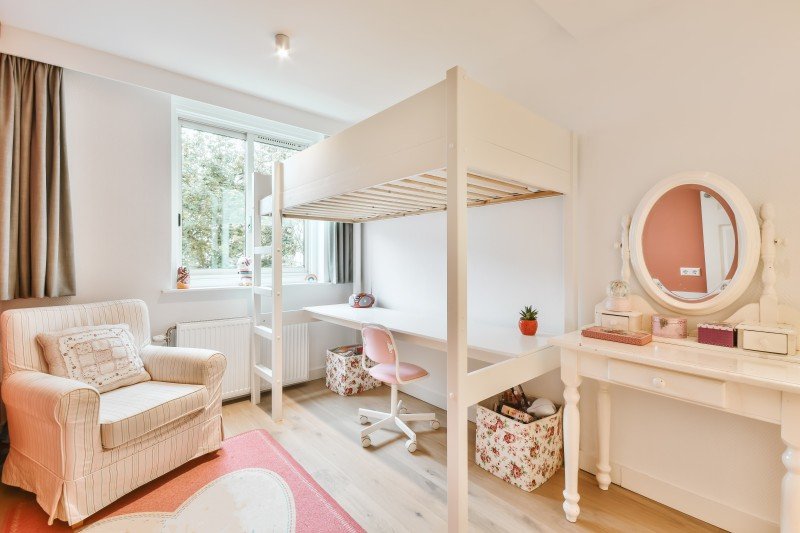10 Tell-Tale Symptoms You Need To Look For A New Bunk Beds For Kids
Bunk Beds for Kids: A Comprehensive Guide
Bunk beds have been a popular option for children's bed rooms for years. They use a space-saving service that makes the most of flooring area, offers fun climbing up choices, and comes in a variety of designs that attract children's creativities. This post explores the advantages, considerations, styles, and security features associated with bunk beds for kids.
Benefits of Bunk Beds
Bunk beds present numerous advantages that make them an appealing choice for families. Here are some key advantages:
Space Saving
- Bunk beds permit 2 or more children to share a space without compromising space for play or other activities.
Affordable
- Purchasing a single bunk bed can be more cost-effective than purchasing 2 different beds.
Fun Factor
- Kids frequently see bunk beds as an enjoyable location to sleep and play, fostering a sense of experience.
Flexibility
- Bunk beds are readily available in different configurations, including L-shaped, loft beds, and even convertible styles that can change as children grow.
Organization
- Many bunk beds come with built-in storage options, such as shelves and drawers, helping keep spaces arranged.
Key Considerations Before Purchasing
Before purchasing a bunk bed, it's essential to consider certain aspects, such as:
Space Requirements
Step the room to make sure that there is sufficient vertical space, allowing for sufficient headroom on the top bunk.Age of Your Children
Consider their age and maturity. Lots of makers advise that children under 6 must not sleep in the top bunk due to safety concerns.Weight Limit
It's vital to examine the weight limitations of the bunk bed for both the leading and bottom bunks to ensure security.Design Preferences
Pick a style that matches the space's decoration and the kids's preferences.Material
Bunk beds are readily available in various products, such as wood or metal. Each has its benefits and drawbacks relating to durability and visual appeals.
Designs of Bunk Beds
Bunk beds come in numerous designs to fit different aesthetic appeals and functional needs. Here's a list of some popular designs:
Standard Bunk Beds
Traditional stacked beds that include 2 beds developed one above the other.Loft Beds
A bed raised high off the ground, with space underneath for a desk, play area, or storage.L-Shaped Bunk Beds
Two beds arranged in an L-shape, supplying more flooring space and a distinct design component.Twin Over Full Bunk Beds
These options feature a twin bed on the top and a full-sized bed on the bottom, accommodating older kids or adults.Triple Bunk Beds
Designed for 3 children, these beds typically consist of three stacked beds, ideal for bigger families.
Safety Features to Consider
Ensuring the safety of kids using bunk beds is vital. Here are some security features to look for before making a purchase:
Guardrails
A bunk bed need to consist of durable guardrails on the leading bunk to avoid unintentional falls.Ladders
Make sure that the ladder is firmly attached and easy for children to browse safely.Stability
Look for bunk beds with lower centers of gravity and large bases to provide much better stability.Quality Construction
Pick beds made from long lasting materials that satisfy security standards, such as ASTM (American Society for Testing and Materials) regulations.
Frequently Asked Questions About Bunk Beds
1. What age is proper for a leading bunk?Generally, children aged six and older are recommended for sleeping in the leading bunk. 2. Are bunk Bunk Beds bryongoldenstein.top for toddlers?Most specialists recommend against
putting young children in the top bunk due to the
danger of falls and incorrect ladder usage. 3. Can bunk beds be separated?Many bunk beds are developed to be separated into 2 standalone beds,
offering added versatility as kids grow
. 4. How do I keep a bunk bed?Regularly check for loose screws and wear, keep bed mattress clean, and guarantee that the bunk bed is
steady to extend its lifespan. 5.
Exist any unique bed mattress requirements for bunk beds?Yes, mattresses for bunk beds should fit snugly without leaving gaps. Usually, thinner mattresses
**(around 6 to 8 inches )are recommended for top bunks for safety. Bunk beds offer a versatile, practical, and enjoyable service for children's sleeping plans, making the most of space while accommodating several kids in one room. By thinking about the important factors
of design, safety, and space, parents can make an informed choice when picking the best bunk bed for their kids's requirements. With the right care and maintenance, a bunk bed can be a precious furniture piece that offers years of usage and enjoyment for kids. Summary Table of Bunk Bed Styles Style Description Best For Requirement Bunk Beds Timeless style, two stacked beds Smaller rooms Loft Beds Elevated bed with open space beneath Study or play locations L-Shaped Bunk Beds 2 beds in an L-shape
- * *
Included floor space Twin Over Full Twin on the top,
complete on bottom Accommodating older children Triple
Bunk Beds
3 stacked beds
Bigger households By understanding
**the numerous choices offered, designated considerations for security and functionality, and proper age standards, households
**can choose the perfect bunk bed that not
only enhances their living space
however also guarantees a safe and
**
**
**pleasurable sleeping environment
for their kids.  ****
****